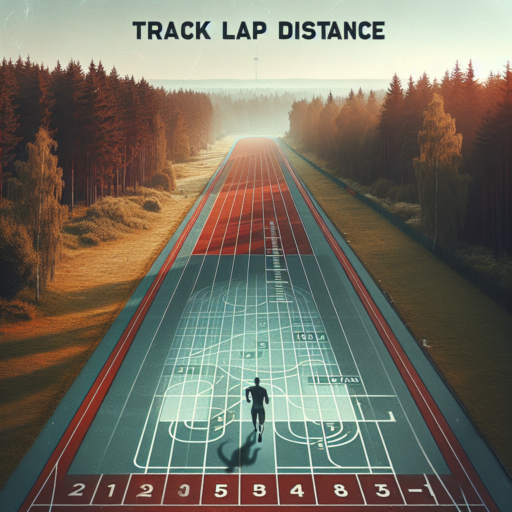How to calculate distance run?
Calculating the distance you’ve run is crucial for tracking your fitness progress, setting goals, and maintaining motivation. Fortunately, modern technology and traditional methods provide several accurate ways to measure your running distance. Whether you prefer using a smart device or sticking to more manual calculations, understanding how to measure your run can enhance your training effectiveness.
Using Running Apps and GPS Watches
One of the most convenient and popular methods to calculate the distance of your run is through GPS-enabled devices, such as smartphones and watches. Apps like Strava, Runkeeper, and GPS watches from brands like Garmin and Apple, offer precise tracking by using satellite navigation systems. These tools not only calculate your distance but also provide insights into your pace, elevation gain, and route.
Mapping Out Your Route
For runners who prefer planning or reviewing their routes manually, several online tools and maps are available. Websites like MapMyRun or Google Maps allow you to create a route and see the total distance before even stepping outside. This method is especially useful for planning long runs or setting specific distance goals.
Regardless of the method chosen, understanding how to accurately calculate your running distance is fundamental for any runner. It helps in better planning your training sessions, measuring improvement, and ensuring you’re meeting your fitness objectives. Whether through high-tech gadgets or manual mapping, getting this calculation right is key to a successful running journey.
How to find running distance with Google Maps?
Finding the distance of your running route can be crucial for tracking your progress and setting goals. Google Maps offers a simple yet effective way to measure how far you’ve run, providing users with a tool to plan and adjust their routes with ease. Below, we delve into a straightforward method to utilize Google Maps for measuring your running distance, ensuring your fitness journey is both productive and enjoyable.
Step 1: Accessing Google Maps
Begin by opening Google Maps on your device. If you’re planning your route beforehand, the desktop version might be more convenient. However, the mobile app is just as capable for on-the-go adjustments. Ensure you’re signed in to your Google account to save and retrieve your routes easily.
Step 2: Using the Right-click Feature to Measure Distance
On the desktop version, navigate to your starting point and right-click on the map. Select «Measure distance» from the dropdown menu. Then, click on various points along your intended running path. Google Maps will create a trail, automatically calculating the total distance. This feature allows for meticulous planning, adjusting for the minutiae of your run, such as avoiding busy intersections or adding scenic detours. For the mobile app, press and hold on your starting point and select «Measure distance» from the options that appear, then proceed to map your route similarly.
Step 3: Customizing Your Route
One of the key benefits of using Google Maps is the ability to customize your route in real-time. After mapping your initial path, you can drag points around to adjust for any changes, like construction or newly discovered shortcuts. Google Maps will instantly update the distance as you edit your route, making it easy to hit your target distance. Don’t forget to utilize the terrain feature to anticipate hills and adjust your training accordingly.
No se han encontrado productos.
Can Google Maps track my run?
Many fitness enthusiasts and casual runners often wonder, «Can Google Maps track my run?» While Google Maps is widely recognized for its navigation and location-tracking capabilities, it is not designed specifically for tracking runs or fitness activities in the manner that specialized fitness apps are. However, with a bit of creativity and the use of additional Google services, runners can still find ways to map and measure their running routes effectively.
Utilizing Google Maps for Running Routes
Despite not having a built-in feature for tracking runs in real-time, Google Maps can be a useful tool for runners looking to plan their routes ahead of time. By utilizing the «My Maps» feature, runners can create custom routes, including measuring distances and even checking elevation changes. This pre-run planning can help in setting up training sessions or scouting new running paths without the need for live tracking.
Alternatives for Run Tracking
For those specifically looking for live run tracking features, turning to apps that integrate with Google Maps or use its API for their tracking purposes could be the solution. Apps like Strava, Runkeeper, and MapMyRun, offer more specialized functionalities for runners, including speed, pace, elevation, and detailed mapping of your run—all while offering the familiar Google Maps interface for route navigation and exploration.
While Google Maps alone may not offer the dedicated run tracking tools that some runners seek, its capabilities for route planning, combined with the integration into third-party running apps, make it a versatile assistant for mapping out runs and exploring new trails. Exploring the synergy between Google Maps and specialized run-tracking apps can significantly enhance your running experience, making every run an adventure to look forward to.
How do I calculate my long run distance?
Calculating your long run distance is essential for both newbie runners and experienced marathoners. This vital element of training helps in enhancing endurance and prepares your body for the actual race day. To start with, it’s crucial to understand that your long run distance should be a proportion of your total weekly mileage. A general rule of thumb is that it can range from 20% to 30% of your weekly training volume.
Firstly, consider your current fitness level and the target distance of your race. If you’re aiming for a half marathon, your long run might be substantially different than if you’re training for a full marathon or an ultra. It’s important to gradually increase your long-distance runs, ideally by no more than 10% each week. This incremental increase helps in preventing injuries and allows your body to adapt to the increasing demands.
Using a running app or a GPS watch can significantly simplify the process of calculating your long run distances. These tools not only track the distance covered but also provide insights into your pace, elevation gain, and other useful metrics. However, if you’re a fan of the old-school method, plotting your route on online maps before heading out is another effective way to measure your long run distance. Whichever method you choose, ensure to keep a log of your runs, as this data will be invaluable in adjusting your training plan as you progress.


